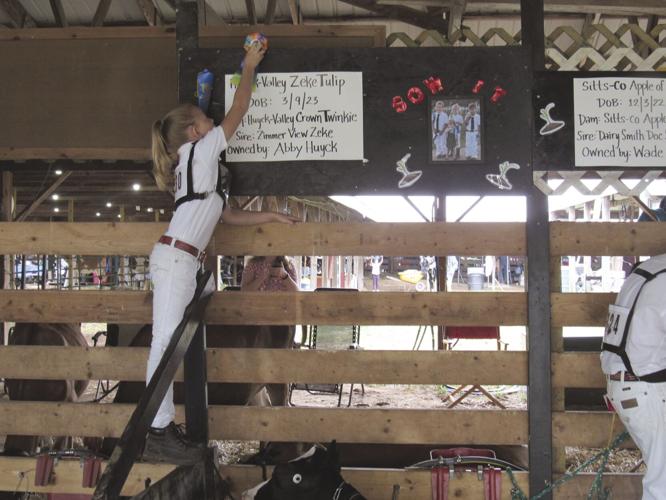With approximately 1,000 animals on the grounds at the Delaware County Fair, one can spend all day watching as animals are judged.
Tuesday morning, Aug. 15, 4-H’ers were busy showing their rabbits, cavies (guinea pigs), dairy cattle, meat goats, horses and sheep in the showmanship competitions. Some of the horse competitions were postponed due to the muddy conditions of the horse show ring.
In the showmanship competition, the judge looks at how well the 4-H’er handles his or her animal and their appearance and may ask questions about the animal. For example, during rabbit judging, the judge may ask why it is important to look in the rabbit’s mouth or ears.
Emily Roach, 4-H team leader Cornell Cooperative Extension Delaware County, said on Wednesday the different animal breeds will compete.
“We usually get representatives from all the breeds of dairy cattle,” she said. There will be six breeds shown Wednesday.
Roach’s daughter Mackenzie, 13, was named junior grand champion after showing one of her goats. Mackenzie said she likes to show her animals.
Christine Miller, of Hobart, said her son Gus, was showing goats and sheep. He had just been named reserved master showman after showing one of his goats. In addition, he was going to show sheep in the afternoon. The Millers raise Sharpshire sheep, which is a meat sheep. Christine said at the fair you can tell if a sheep is raised for meat or wool by whether it is shorn or not. Sheep that are shorn are raised for meat, so judges can see the cuts of meat on the sheep.
In addition to animals, farmers enter their hay and corn to be judged. Cornell Cooperative Extension Delaware County’s Team Leader, WAP Precision Feed Management Paul Cerosaletti and Senior Team Leader, WAP Nutrient Management Dale Dewing were busy Tuesday morning collecting samples from bales of hay to test for nutrients and weeds.
Cerosaletti and Dewing said this has been a difficult year for farmers. “They could make hay early on, but it was dry and it was hard to gather and bale,” Cerosaletti said. “It was brittle.”
Then the weather turned wet and it was hard for farmers to get their second and third cutting of hay in, Dewing said. “Even baleage and silage has been hard to get in,” he said.
Cerosaletti and Dewing said they look for color, how it smells, whether it’s free of mold, dust or weeds and the texture should be soft and stemmy. The sample of the bales are also analyzed in a lab to get the protein and energy count before ribbons are awarded.
Dewing said hay crops take up the most acreage in the county and with people wanting more grass-fed animals, hay is the largest value crop in the county. Climate change is affecting other areas of the country, but the county’s climate and soil is suited well for growing high quality forage.
At the end of the Agriculture Awareness building, Phil Singer was busy making a sand sculpture. He said he will be at the fair until Friday creating his sculpture of animals on a Ferris wheel.
